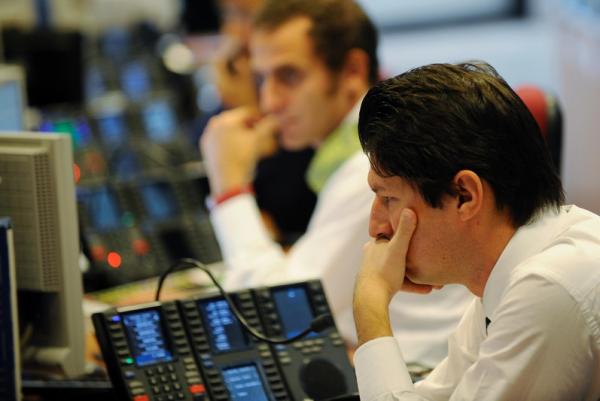Bitcoin price today: gains to $120k, near record high on U.S. regulatory cheer
(Updates levels throughout after U.S. open)
* European stocks tumble, Italy down over 4% after virus
spread
* 10-year Treasury yields rally to lowest since mid 2016
* MSCI ex-Japan extends losses, Japan closed for public
holiday
* Gold prices surge to highest since 2013
* Dollar pushes higher, batters emerging markets
* E-mini futures for S&P500 fall more than 1% in Asia
trading
* South Korea on alert after virus cases surge to 763
* China reports 2,592 die of virus
By Marc Jones
LONDON Feb 24 (Reuters) - European shares suffered their
biggest slump since mid-2016 on Monday and oil plunged almost
5%, as a jump in coronavirus cases in Italy, South Korea, Japan
and Iran sent investors scrambling to the security of gold and
government bonds.
Wall Street dived around 3% after it opened .N as the ugly
sell-off spread.
Europe had seen Milan's stock market plummet over 5.5% after
a spike in cases of the virus left six dead in Italy and parts
of the country's industrial north in virtual lockdown.
Frankfurt .GDAXI and Paris .FCHI both fell more than 4%
and London's FTSE .FTSE dropped 3.8%, wiping at least $400
billion off the region's market value in a few short hours.
The flight to safety was just as resounding, gold surging
2.5% to a seven-year high of $1,680 an ounce. GOL/
Bonds rallied too. Ten-year U.S. Treasury yields dropped
below 1.36% US10YT=RR for the first time since July 2016. The
30-year Treasury touched a record low at just under 1.81%
US30YT=RR and German yields dropped to -0.48% DE10YT=RR ,
their lowest in more than four months. GVD/EUR
"Everybody sees that this could be another leg down for the
economy, and we were already in quite a fragile state to begin
with," said Rabobank's head of macro strategy, Elwin de Groot.
"It could be another step towards a recession in more
countries."
Wall Street's initial fall swiped more than 800 points off
the Dow .DJI , shoved the benchmark S&P 500 .SPX below its
50-day moving average -- a key technical level for chart
watchers -- and took MSCI's world index negative for the year.
In Asia overnight, South Korea's KOSPI .KS11 had slumped
3.9% after the government declared a high alert. The number of
cases rose to 763 and deaths to seven. Japanese markets were closed, but Australia's benchmark
index slid 2.25% and New Zealand fell about 1.8%. .AXJO
.NZ50 . China's blue-chip CSI300 .CSI300 closed down 0.4%,
taking MSCI's broadest index of Asia-Pacific shares outside
Japan .MIAPJ0000PUS to its lowest since early February.
The virus has now killed 2,592 people in China, which has
reported 77,150 cases, and spread to some 28 other countries and
territories, with a death toll outside of China around two
dozen, according to a Reuters tally. [nL8N2AB5TN
Iran, which announced its first infections last week, said
it had confirmed 43 cases and eight deaths, with most cases in
the holy city of Qom. Saudi Arabia, Kuwait, Iraq, Turkey and
Afghanistan imposed travel and immigration restrictions on the
Islamic Republic.
"The idea that the coronavirus has been fully contained has
been firmly banished," Chris Beauchamp Chief Market Analyst at
IG. "This means the economic forecasts of the impact, such as
they are, will need to be revised, with a greater impact now to
be expected.
SURGE TO SAFETY
As well as the early whack to Wall Street, CBOE's VIX
volatility index .VIX , the so-called fear gauge, reached its
highest since August.
U.S. fed fund futures 0#FF: signalled more rate cuts later
this year and a near 20% chance of a cut next month.
FX markets reacted by pushing up the safe-haven Japanese yen
to 111.34 yen per dollar JPY= . But against the rest of the
world, the dollar was again showing its strength.
The euro was squeezed towards $1.08 EUR= and the
Australian dollar, often traded as a proxy for China risk, fell
to an 11-year low of $0.6585 AUD=D3 . /FRX
Korea's won KRW= was down 1% at 1,219.06 after falling to
its weakest since August 2019. Emerging-market currencies from
Mexico's peso MXN= and Turkey's lira TRY= to Poland's zloty
and Russia's rouble were all in the red.
In commodity markets, Brent crude LCOc1 fell 3.5%, or
$2.1, to $56.35 a barrel. U.S. crude CLc1 dropped 3%, or
$1.64, to $51.74 a barrel. Among the main industrial metals,
copper fell 1.4% and zinc was down 2.5%. MET/L
"Oil prices will remain vulnerable here as energy traders
were not pricing in the coronavirus becoming a pandemic," said
Edward Moya, senior market analyst at OANDA.
"While some parts of China are seeing improving
statistics... markets will remain on edge until we start seeing
the situation improve in Iran, Italy, South Korea and Japan."
Asia stock markets https://tmsnrt.rs/2zpUAr4
Asia-Pacific valuations https://tmsnrt.rs/2Dr2BQA
World FX rates in 2020 http://tmsnrt.rs/2egbfVh
^^^^^^^^^^^^^^^^^^^^^^^^^^^^^^^^^^^^^^^^^^^^^^^^^^^^^^^^^^^>
